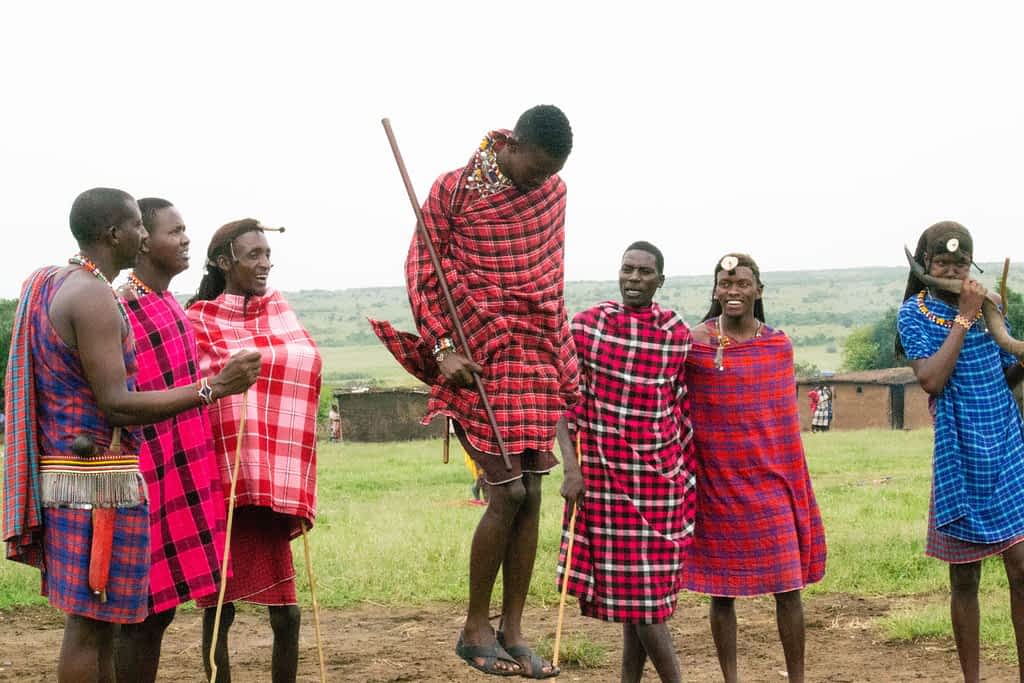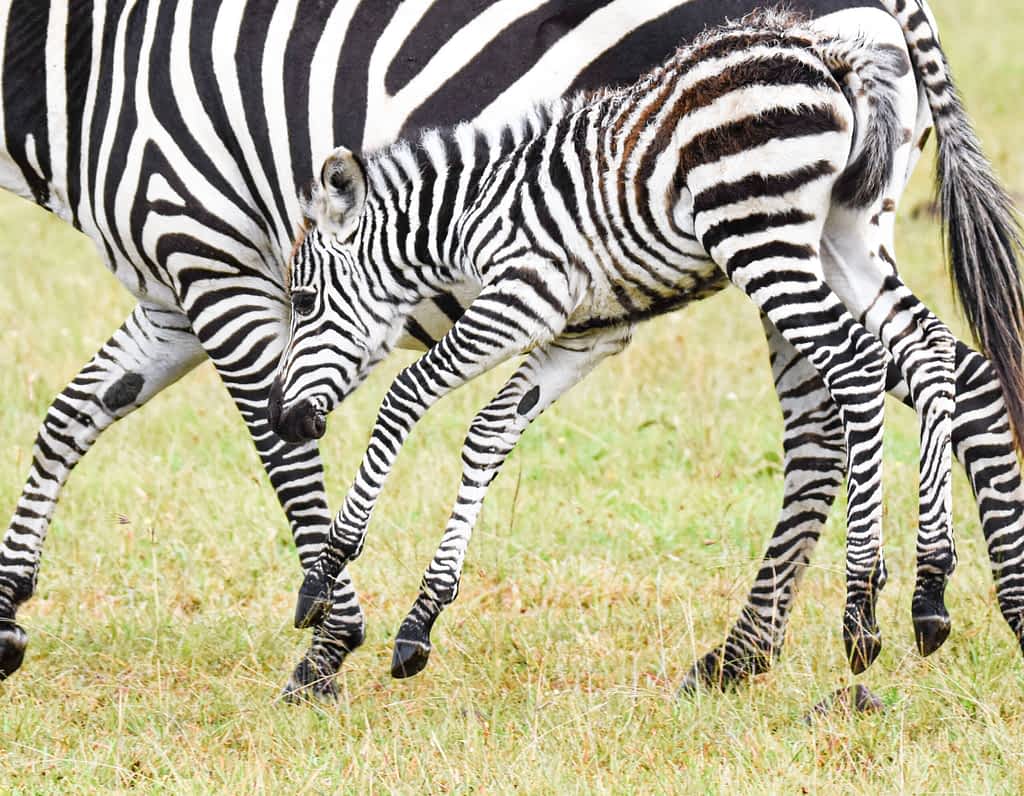MARA NABOISHO CONSERVANCY, SERENGETI, RUAHA AND ZANZIBAR

Day 1. Naboisho Conservancy, Maasai Mara, Kenya.

Day 1
On arrival at Nairobi’s Jomo Kenyatta International Airport, you will be met by an Asilia driver who is partnered with King Salama Safaris who will transfer you by private vehicle to the domestic airport, Wilson Airport. Fly from here to the Masaai Mara, a journey of approximately 1 hour (15 kg luggage limit per person; soft bags required for all flights on this itinerary). A guide from Encounter Mara will meet you here and game drive you back to camp, offering the perfect introduction to the vast savannah plains and stopping to watch any wildlife you encounter on the way. Settle into your tent and enjoy lunch and time to relax. After afternoon tea and cake, head out on a game drive to search for big cats and other wildlife in the Mara Naboisho Conservancy.
MARA NABOISHO CONSERVANCY
Part of the Greater Masai Mara, the Mara Naboisho Conservancy offers excellent wildlife densities as well as an insight into how the Mara Conservancies balance the needs of local communities with wildlife conservation=
Wildlife: Lion, leopard, buffalo, elephant, hippo, giraffe, zebra, wildebeest, hyena
Safari activities: Game drives, night drives, cultural visits, and hot-air ballooning (additional cost)
Meals & Drinks: Breakfast, lunch, dinner, and selected beverages and alcohol included
Extras: Laundry included
Day 2 And 3. Naboisho Conservancy, Maasai Mara, Kenya.

Enjoy morning and afternoon safari activities at Encounter Mara. A visit to one of the local villages offers authentic insight into Maasai culture and your guide will explain how the Mara Naboisho Conservancy carefully balances the needs of wildlife conservation with the local communities’ livelihoods. Night drives offer a unique chance to search for nocturnal species as well as predators on the move.
Meals & Drinks: Breakfast, lunch, dinner, and selected beverages and alcohol included
Extras: Laundry included

Day 4. Serengeti, Tanzania

After breakfast, depart camp with a packed lunch and make your way towards the airstrip to begin your journey across the border into the Serengeti in Tanzania. You will fly to Migori near the border, where a driver and vehicle will meet you and drive you across the land border, stopping to complete immigration formalities. From there it’s a short distance to Tarime on the Tanzania side, to arrive in time for your flight into the Serengeti. The journey into the northern Serengeti takes approximately three hours, or about four and a half hours into the southern Serengeti. In the late afternoon go out on a game drive to explore the vast savannah with your guide from Ubuntu Migration Camp.
UBUNTU MIGRATION CAMP
Known as a mobile camp, Ubuntu Migration Camp moves around the Serengeti several times each year to locate itself as close as possible to the predicted location of the Great Migration herds of up to 2 million wildebeest, zebra and gazelle. As with all wildlife sightings, viewing of the migration cannot be guaranteed, but the camp aims to give you good chances of being in the right location at the right time. There are eight large tents, each with a veranda and en suite bathroom with a hot bucket shower. There is also a lounge tent and dining tent, although meals are served under the stars whenever possible.
Mobile tented camp which moves around the Serengeti several times each year, following the pattern of the Great Migration
All tents are en suite with hot bucket showers
Communal dining
SERENGETI NATIONAL PARK
Meals & Drinks: Breakfast, lunch, dinner, and selected beverages and alcohol included
Extras: Laundry included
Day 5 And 6. Serengeti, Tanzania

Enjoy morning and afternoon safari activities at Encounter Mara. A visit to one of the local villages offers authentic insight into Maasai culture and your guide will explain how the Mara Naboisho Conservancy carefully balances the needs of wildlife conservation with the local communities’ livelihoods. Night drives offer a unique chance to search for nocturnal species as well as predators on the move.
Meals & Drinks: Breakfast, lunch, dinner, and selected beverages and alcohol included
Extras: Laundry included
Day 7. Kalama Conservancy, Samburu

After breakfast in camp, you will be driven to the airstrip for your flight south to Ruaha National Park, a journey of roughly 2 hours. A guide from Kwihala will be there to greet you and game drive you back to camp, introducing you to the very different landscape of this southern park. After lunch and a little time to relax, you will go out on an afternoon game drive and stop for sundowner drinks and snacks. Night-drive back to camp, watching out for nocturnal species such as the bat-eared fox, or predators such as lion, that start to prowl as darkness fall
KWIHALA
Kwihala combines raw beauty with simple excellence. Situated in the safari frontier of Ruaha in Tanzania, this is a charming, authentic tented camp located on a sandy riverbed in the prime wildlife area of the park. With just six guest tents, excellent guides and a variety of safari activities available, including walking safaris, night drives and game drives, it is the perfect base for your safari.
Authentic frontier-style tented camp
All tents are en suite with hot bucket showers
Located on the banks of the sandy Mwagusi River
Communal dining — often outdoors under the shade of a tree or dinners lit by lantern in the riverbed
RUAHA NATIONAL PARK
Meals & Drinks: Breakfast, lunch, dinner, and selected beverages and alcohol included
Extras: Laundry included
Day 8 And 9. Ruaha National Park, Tanzania.

Safari activities take place in the early morning and late afternoon, when wildlife is most active. You will join expert guides on game drives to explore further afield, on walking safaris to seek out the smaller details and learn how to track wildlife from prints and signs in the bush, and on night drives to watch nocturnal species. Breakfast is often a picnic to maximise your explorations, and you will return to camp for lunch and a siesta.
Meals & Drinks: Breakfast, lunch, dinner, and selected beverages and alcohol included
Extras: Laundry included
Day 10. Zanzibar

After breakfast, depart camp with a picnic lunch and game drive to the airstrip, where you will fly to Zanzibar, two and a half hours away. On arrival, you will be met and driven by private vehicle to Matemwe Lodge, northeast of the island. Spend the rest of the afternoon unwinding in your thatch-and-stone chalet right on the ocean, snoozing in a hammock, or swimming in one of the two pool.
MATEMWE LODGE
One of the first boutique lodges in Zanzibar, Matemwe Lodge is perched on a coral rock outcrop overlooking a sandy beach gently sloping into the Indian Ocean. Adjacent to the lodge, the coral reef surrounding the Mnemba Atoll offers superb diving and snorkeling. Fresh seafood, refreshing cocktails, and relaxing massages are just some elements of the laid-back daily routines of Matemwe’s guests. Matemwe Lodge is made up of only 12 beach chalets, all overlooking the Indian Ocean. Each of the private verandas is furnished with large hammocks and sofas, perfect for whiling away the time as the occasional dhow drifts past in the distance.
ZANZIBAR ISLAND
Indian Ocean island with warm tropical sea to swim in
Snorkelling and diving on reefs — enjoy abundant marine life including turtles and dolphins
Other watersports include kayaking, kitesurfing and stand-up paddle boarding
Mix of African and Arabic culture and history
Powder-soft white, sandy beaches
Watch fishermen sail in traditional dhow and ngalawa boats
Stone Town, a historic UNESCO World Heritage Site, is well worth a visit to shop for curios and photograph iconic Zanzibar carved doorways
Meals & Drinks: Breakfast, dinner, and selected beverages and alcohol included
Day 11 And 12. Zanzibar

Spend your days at Matemwe Lodge relaxing and swimming in the warm Indian Ocean, taking a boat to the reef to snorkel or dive, kayaking along the shoreline looking for turtles, sailing in a dhow watching for dolphins or taking a picnic lunch on a remote sandbank. Other watersports on offer include stand-up paddleboarding, kayaking and kitesurfing (seasonal).
Meals & Drinks: Breakfast, dinner, and selected beverages and alcohol included
Day 13. Leave Zanzibar

After breakfast, you will be driven back to Zanzibar International Airport for your flight to Dar es Salaam International Airport, only 20-minutes drive away, where you can connect to your international flight home.
Let Us Give You the Trip of a Lifetime
We look forward to helping you plan an amazing trip that you will remember for years to come.
Breakfast.




















































